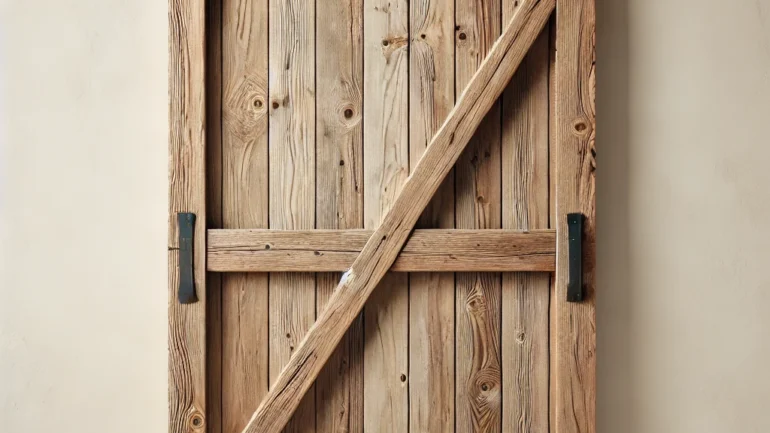Sustainable Furniture Flipping: Eco-Friendly Home Updates for 2025
Transform your space while protecting the planet
In 2025, sustainability is not just a trend — it’s a movement that’s reshaping how we live, buy, and design our homes. As people become more aware of their environmental impact, many are turning to eco-friendly solutions for everyday tasks, and furniture flipping is one of the most rewarding and creative ways to contribute to a more sustainable lifestyle. Whether you’re an experienced DIYer or just starting, flipping old furniture not only saves you money but also reduces waste and contributes to the health of the planet.
In this guide, we’ll explore sustainable furniture flipping techniques, including how to choose the right pieces to restore, eco-friendly methods of restoration, creative repurposing ideas, and how to sell or showcase your upcycled furniture. Let’s dive into the world of eco-friendly furniture flipping for 2025.
Why Sustainable Furniture Flipping Is Gaining Popularity
The growing interest in sustainability has reached many areas of our lives, from the food we eat to the products we buy and the way we decorate our homes. Traditional furniture shopping often results in mass-produced items made from harmful materials, and the disposal of old furniture contributes significantly to landfills. Sustainable furniture flipping offers an alternative that’s good for your home and the environment.
By restoring and repurposing furniture, you’re reducing the demand for new raw materials and decreasing your carbon footprint. This practice also extends the life of furniture that would otherwise be discarded, giving it a second chance to be useful and appreciated. Furniture flipping can also be a way to showcase your personal style while promoting sustainable living — two birds with one stone.
Not only does flipping old furniture make your home more eco-friendly, but it also allows you to create unique, one-of-a-kind pieces that tell a story. Rather than buying mass-produced items from big-box stores, flipping gives you the opportunity to add custom, personalized touches that are perfect for your home’s aesthetic.
Step 1: Finding the Right Furniture to Flip
The first step in any furniture flipping project is choosing the right pieces to work on. Not all furniture is a good candidate for restoration, so it’s important to be selective. Here are some guidelines to help you find the perfect furniture to flip:
Focus on Quality Materials
When selecting furniture to flip, prioritize solid wood or metal items over particle board or flimsy, inexpensive materials. These sturdy pieces will not only withstand the restoration process better but also last longer once they’re restored. Solid wood furniture, like oak, pine, and maple, is often in high demand because of its durability and timeless appeal.
Inspect for Structural Integrity
Before committing to a piece, always inspect the furniture for structural issues. Minor cosmetic damage like scratches, dents, or faded finishes can usually be restored, but major damage like cracks, rot, or missing parts might be harder to fix. Make sure the piece is still sturdy and functional before starting any restoration work.
Look for Hidden Potential
Sometimes, the true beauty of a piece of furniture is hidden beneath layers of paint, dirt, or outdated designs. A vintage chair with worn upholstery, an old dresser with faded paint, or a coffee table with a scratched surface can all be transformed into something stunning with a little creativity. Look beyond the surface and ask yourself how you could make that piece new again.
You can find excellent pieces to flip at thrift stores, flea markets, garage sales, and online marketplaces like Facebook Marketplace, Craigslist, and OfferUp. These sources often offer affordable furniture that has great potential with a little work.
Step 2: Eco-Friendly Restoration Techniques
Now that you’ve found the perfect furniture, it’s time to restore it! However, instead of using harsh chemicals and toxic materials, you can use sustainable techniques that are better for both you and the environment. Here are some eco-friendly restoration ideas to get you started:
Sanding and Stripping the Old Finish
Before painting or staining your furniture, you’ll need to remove any old finish. Sanding is a common method for this, but instead of using a power sander that creates a lot of dust, try a manual sanding block or a low-dust power sander. Always wear a mask to avoid inhaling particles and consider doing this part of the work outdoors to reduce your exposure to dust.
Non-Toxic Paint and Stains
Conventional paints and stains often contain volatile organic compounds (VOCs) that release harmful chemicals into the air. Thankfully, eco-friendly alternatives are becoming more readily available. Look for water-based paints or non-toxic paint brands like Farrow & Ball, ECOS Paints, or Clare Paint. These paints are low in VOCs and are made from natural ingredients, making them safer for both your health and the planet.
For staining wood, consider using plant-based or water-based stains. These are non-toxic and offer a similar finish to traditional stains without the harsh chemicals.
DIY Natural Wood Polishes
Rather than purchasing chemical-laden furniture polish, you can create your own natural wood polish at home using simple ingredients like olive oil, lemon juice, and beeswax. This mixture will clean, shine, and protect your furniture without introducing harmful chemicals into your home.
Upholstery Options
If you plan on reupholstering furniture, choose eco-friendly fabrics such as organic cotton, hemp, or linen. These materials are sustainable, biodegradable, and free from harmful pesticides and chemicals. Look for fabric suppliers that offer certified organic and fair-trade options to ensure that your choices are as sustainable as possible.
Step 3: Creative Repurposing Ideas
Repurposing old furniture is one of the most exciting aspects of flipping. You can think beyond simply restoring a piece to its original state — consider how you can reinvent it entirely. Here are some creative repurposing ideas for common furniture pieces:
Convert a Dresser into a Media Console
An old dresser can be easily converted into a chic media console for your living room. Simply remove the drawers or modify them to fit your needs and add cable management holes. The result is a stylish storage solution that’s perfect for a TV, electronics, and other media-related items.
Upcycle a Coffee Table into a Plant Stand
An outdated coffee table with a damaged top can be repurposed into a plant stand for your home. By replacing the top with reclaimed wood or a glass pane, you can create a beautiful focal point for your indoor plants.
Turn a Wooden Ladder into a Display Shelf
An old wooden ladder can be transformed into a unique display shelf for books, plants, or other decorative items. Simply secure it to the wall, and you have an eye-catching, functional piece that adds charm to any room.
Repurpose Chairs into a Garden Bench
If you come across a set of old chairs that are beyond saving, consider turning them into a quirky garden bench. By attaching them to a wooden frame, you can create a one-of-a-kind outdoor seating area that’s perfect for your garden or patio.
Step 4: Sustainable Finishing Touches
After you’ve completed the major work, it’s time to add the finishing touches. Whether it’s fabric, hardware, or decorative accents, make sure that your final details align with the sustainable theme.
- Sustainable Upholstery: Look for natural fabrics that are certified organic and free from harmful chemicals.
- Recycled Hardware: Instead of buying new hardware, consider repurposing old knobs, handles, and hinges from other pieces of furniture or purchasing secondhand hardware from thrift stores.
- Decorative Accents: Use natural materials like wood, stone, and clay for any added accents. These materials add texture and warmth to your furniture while staying true to eco-conscious values.
Step 5: Selling or Showcasing Your Work
Once your project is complete, you may want to sell or showcase your work. To attract buyers, it’s important to highlight the sustainable aspects of your work. Take clear, well-lit photos of both the “before” and “after” transformations, showing off the improvements you’ve made. Mention the eco-friendly materials you’ve used in your descriptions, and use keywords like “upcycled,” “eco-friendly,” and “sustainable” to attract buyers who appreciate sustainability.
You can sell your flipped furniture on platforms like Etsy, Facebook Marketplace, or Instagram. Use social media to share your before-and-after transformations and connect with like-minded individuals who care about sustainability.
Conclusion
Sustainable furniture flipping is a fun, creative, and environmentally responsible way to update your home. By following eco-friendly restoration techniques, thinking creatively about repurposing, and using non-toxic materials, you can transform old furniture into beautiful, functional pieces that benefit both you and the planet. Whether you’re flipping furniture for personal use or as a business, you’ll enjoy the satisfaction of knowing your work is making a positive impact on the environment.



